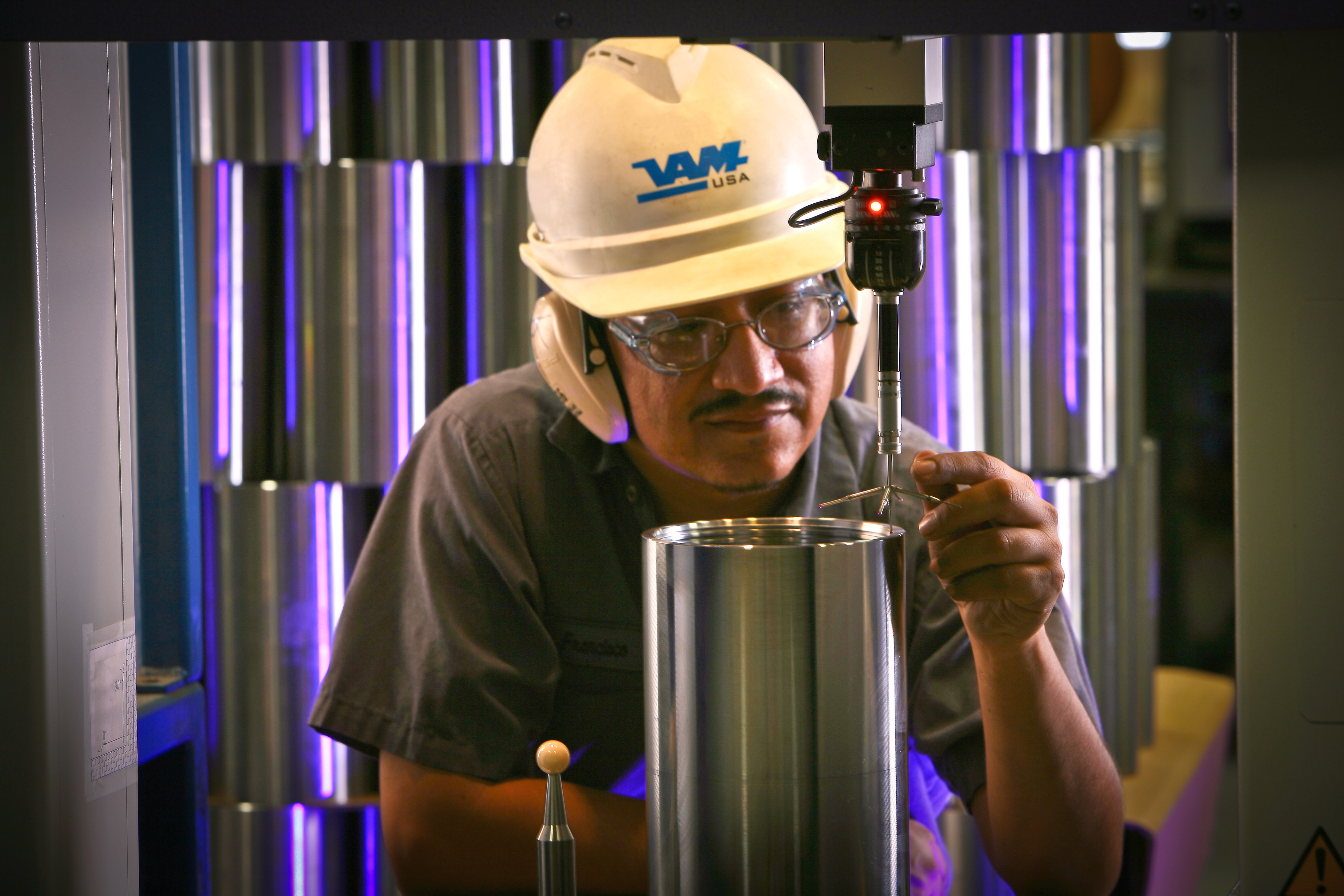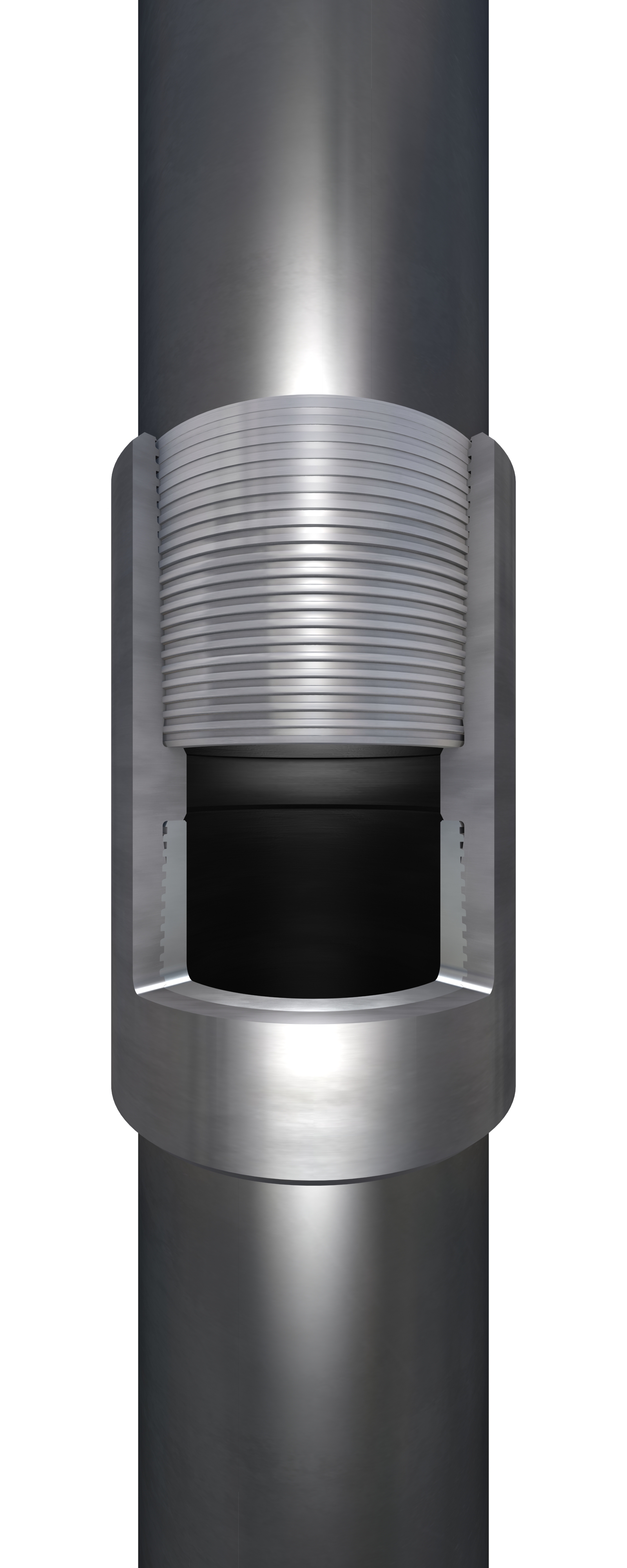
Strict manufacturing protocols ensure tighter tolerances. (Source: Vallourec USA Corp.)
Despite the recent drop in the number of drilling rigs, long-term demand for natural gas is expected to grow as industrial use and exports rise. The Marcellus and Utica shale plays will play key roles in meeting increased production needs, particularly as northeastern U.S. natural gas infrastructure continues to expand. Even though producers have become more proficient at extracting hydrocarbons, operators look for new technologies to optimize the drilling process for improved efficiency and cost reduction.
The shale and tight oil formations of the Marcellus and Utica are deeper and more complex than the Eagle Ford or Barnett shale plays. Marcellus wells are drilled 1,524 m to 2,743 m (5,000 ft to 9,000 ft) vertically and 3,048 m (10,000 ft) horizontally. To reach these pay zones, thicker and heavier weight pipe is needed to handle the burst and tension requirements for fracture treatment. In addition, these longer laterals require a higher torque connection to reach the target depth.
To meet operators’ needs for a higher performance semi-premium threaded and coupled connection that exceeds the American Petroleum Institute (API) Buttress capabilities, Vallourec has developed an improved connection that is stronger and enhances well integrity. Using the DWC/C solution for production casing, the DWC/C-IS coupling includes an internal shoulder for positive position makeup to eliminate the use of backups during the running operations. Rigidness of the internal shoulder provides additional stability in the connection.
Another option, the DWC/C-IS PLUS, offers a larger coupling outer diameter (OD) that prevents the connection from being a limiting factor on heavier wall production casing. Its stronger-than-the-pipebody boosts the available performance for operators by increasing the connection performance to 100% of pipe body rating.

Faster makeup
Searching for ways to speed up casing jobs, producers looked to the industry to design an easier-to-run connection that ensures rig reliability and simplified operations. The DWC/C-IS, with its internal shoulder, provides more reliability during the makeup process for the rig crew and proper thread interference for superior sealing capability. Since backups are not applied to the coupling, this allows the connection to be made up without any external loads applied that could cause improper makeup signatures. This makeup process will result in fewer connections requiring breakout for review and assessments.
Higher rated pipe
Operators are rotating and applying a compressive load on the pipe during installation of the string through high bending and dogleg severity, subjecting the connections to high fatigue. Risk is increased further when unknown variables are introduced. Operators also demand reliability and well integrity to ensure production for the life of the well without leaks or shut-outs.
API Buttress is not validated to high-torque capability or 100% compression resistance with high bending resistance. Limitations for an API connection occur when, during horizontal well casing, additional weight or torque is required to reach the target depth. The DWC/C-IS PLUS gives operators a matched strength coupling that is more robust and has better fatigue resistance to reach the outer edge of their formation. This connection can be used with the heavier wall and higher yield strength pipe necessary for the required higher pressures.
DWC/C-IS PLUS connections can handle the cyclic loads induced by internal pressure of the fracturing jobs, rotational torque requirements and the tensile loads of the entire length of the casing string. With its larger coupling, it is recommended for heavier weight pipes. Its increased cross-sectional area makes it a stronger coupling with more area to resist fatigue loads, giving the operator an increased safety factor. It also provides matched strength couplings and therefore a connection that is more robust and has better fatigue resistance than alternatives.

High-cyclic loads
When installing the string in the wellbore, the pipe might be subjected to harmonic fatigue loads. After installation in the wellbore, Marcellus operators may run 30 to 60 fracture stages. Therefore, the high-fatigue load is followed by a high number of fracturing cycles and then by pressure-testing to ensure the connection is physically capable of performing in the manner used by operators in the field. In every fracture stage internal casing pressures can approach pipe burst strength prior to rapid pressure reduction. It is a high-fatigue load coming close to the limit of the pipe and connection and then reducing pressure multiple times. These high cyclic fracture stages generate extremely high fatigue loading, and operators demand strings and connections that will meet their requirements. This new family of connections has been fit-for-purpose-tested and validated, testing the connections through the rigors encountered in shale wells. The family also has been successfully used in the field for years.
Complex wells in the Marcellus and Utica are comparatively deeper and higher pressure and, therefore, present operators with unknown variables. Rock pressures vary by area, and operators are still discovering the effect of the rock density variation on the strings. The casing string might encounter collapse and get various loads on the pipe that operators might not expect because shale drilling has only been around for eight to 10 years in that region. Load conditions as a result of the formation are still in the infancy stages as a result of the new area of development. New drilling methods and new technologies help operators improve drilling efficiency and productivity.
Some of the shale operators are starting to see more is not always better. They might have done 30 fractures, then dropped down to 15 and then tried 20 or 25 to find the most efficient scenario. Unknown well conditions can occur in new horizontals, and operators are trying to understand and establish best practices. Operators are improving their understanding of the reservoirs and utilization of production casing, completion and well stimulation techniques.
Recommended Reading
E&P Highlights: Dec. 30, 2024
2024-12-30 - Here’s a roundup of the latest E&P headlines, including a substantial decline in methane emissions from the Permian Basin and progress toward a final investment decision on Energy Transfer’s Lake Charles LNG project.
Expand Lands 5.6-Miler in Appalachia in Five Days With One Bit Run
2025-03-11 - Expand Energy reported its Shannon Fields OHI #3H in northern West Virginia was drilled with just one bit run in some 30,000 ft.
Shale Outlook: E&Ps Making More U-Turn Laterals, Problem-Free
2025-01-09 - Of the more than 70 horseshoe wells drilled to date, half came in the first nine months of 2024 as operators found 2-mile, single-section laterals more economic than a pair of 1-mile straight holes.
Watch for Falling Gas DUCs: E&Ps Resume Completions at $4 Gas
2025-01-23 - Drilled but uncompleted (DUC) gas wells that totaled some 500 into September 2024 have declined to just under 400, according to a J.P. Morgan Securities analysis of Enverus data.
E&Ps Pivot from the Pricey Permian
2025-02-01 - SM Energy, Ovintiv and Devon Energy were rumored to be hunting for Permian M&A—but they ultimately inked deals in cheaper basins. Experts say it’s a trend to watch as producers shrug off high Permian prices for runway in the Williston, Eagle Ford, the Uinta and the Montney.
Comments
Add new comment
This conversation is moderated according to Hart Energy community rules. Please read the rules before joining the discussion. If you’re experiencing any technical problems, please contact our customer care team.





